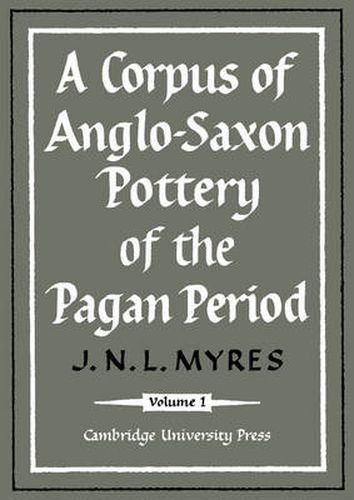Readings Newsletter
Become a Readings Member to make your shopping experience even easier.
Sign in or sign up for free!
You’re not far away from qualifying for FREE standard shipping within Australia
You’ve qualified for FREE standard shipping within Australia
The cart is loading…






The author’s chief purpose in compiling and presenting this illustrated guide to Anglo-Saxon pottery of the period from about AD 400-650 is to show how this pottery can be used as evidence for the early Anglo-Saxon period in England in terms of both political history and culture. Introductory chapters in Volume I explain the typology employed in classifying the pots and give evidence for the dating and development of each type and for the relationship which the English pieces bear to the corresponding series on the continent, mainly to be found in north Germany, Scandinavia and the Low Countries. The core of the work is the inventory of some 3,500 pots typologically arranged and described according to standardised formulae, each one illustrated in the catalogue of drawings which forms Volume 2. These volumes provide the detailed evidence on which Dr Myres’ earlier book Anglo-Saxon Pottery and the Settlement of England was based and therefore of value as much for the general history of early England as for the study of an important branch of archaeology. They will be of great help and interest to museum curators and archaeologists and students of ceramics generally.
$9.00 standard shipping within Australia
FREE standard shipping within Australia for orders over $100.00
Express & International shipping calculated at checkout
The author’s chief purpose in compiling and presenting this illustrated guide to Anglo-Saxon pottery of the period from about AD 400-650 is to show how this pottery can be used as evidence for the early Anglo-Saxon period in England in terms of both political history and culture. Introductory chapters in Volume I explain the typology employed in classifying the pots and give evidence for the dating and development of each type and for the relationship which the English pieces bear to the corresponding series on the continent, mainly to be found in north Germany, Scandinavia and the Low Countries. The core of the work is the inventory of some 3,500 pots typologically arranged and described according to standardised formulae, each one illustrated in the catalogue of drawings which forms Volume 2. These volumes provide the detailed evidence on which Dr Myres’ earlier book Anglo-Saxon Pottery and the Settlement of England was based and therefore of value as much for the general history of early England as for the study of an important branch of archaeology. They will be of great help and interest to museum curators and archaeologists and students of ceramics generally.